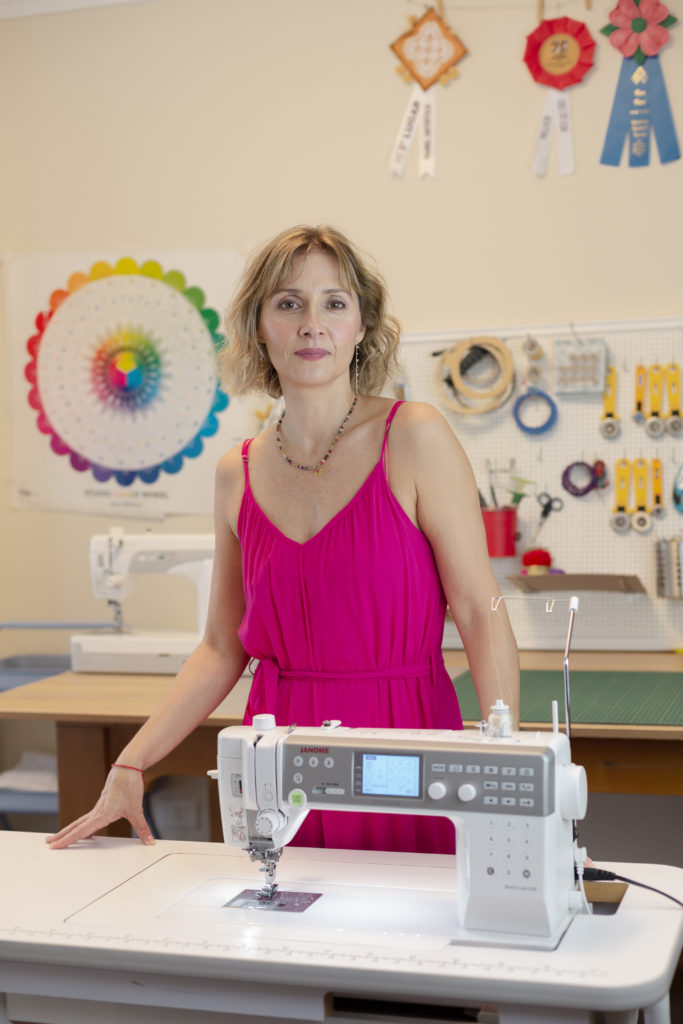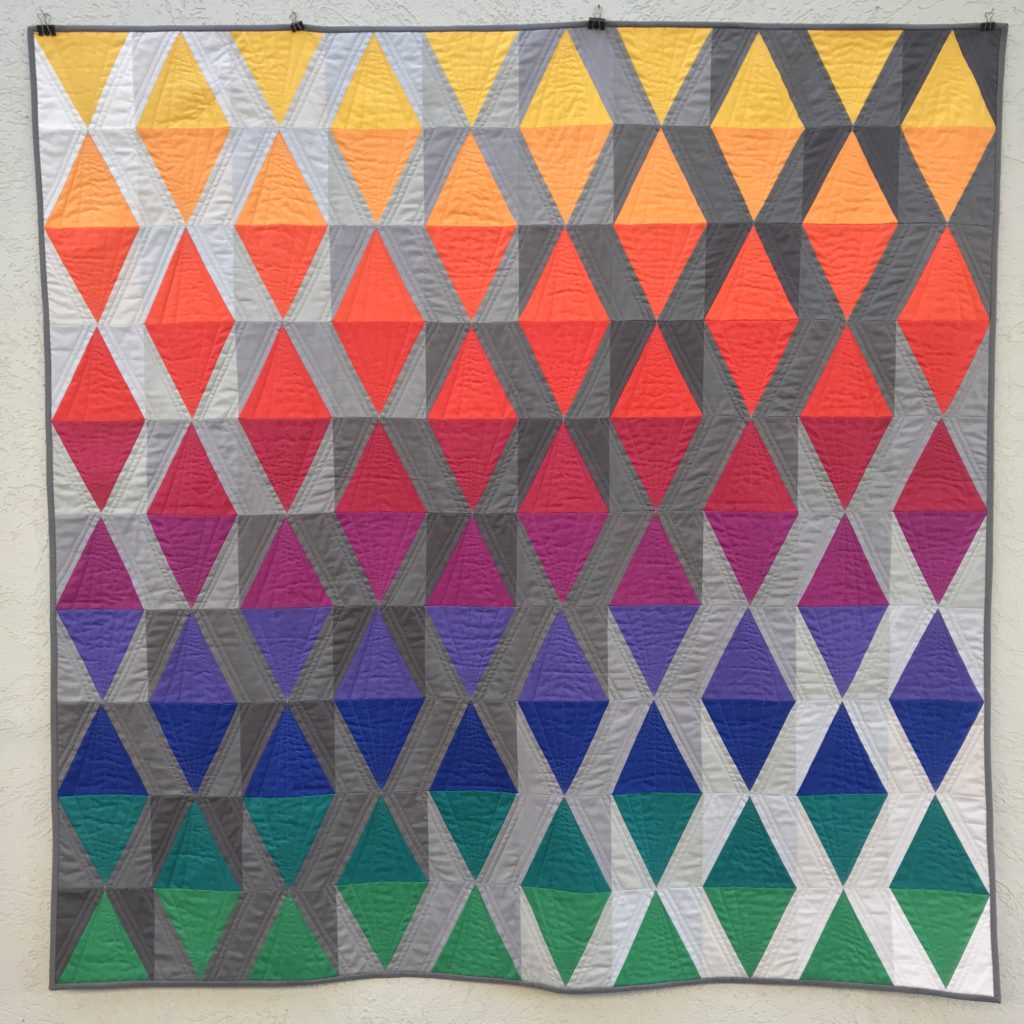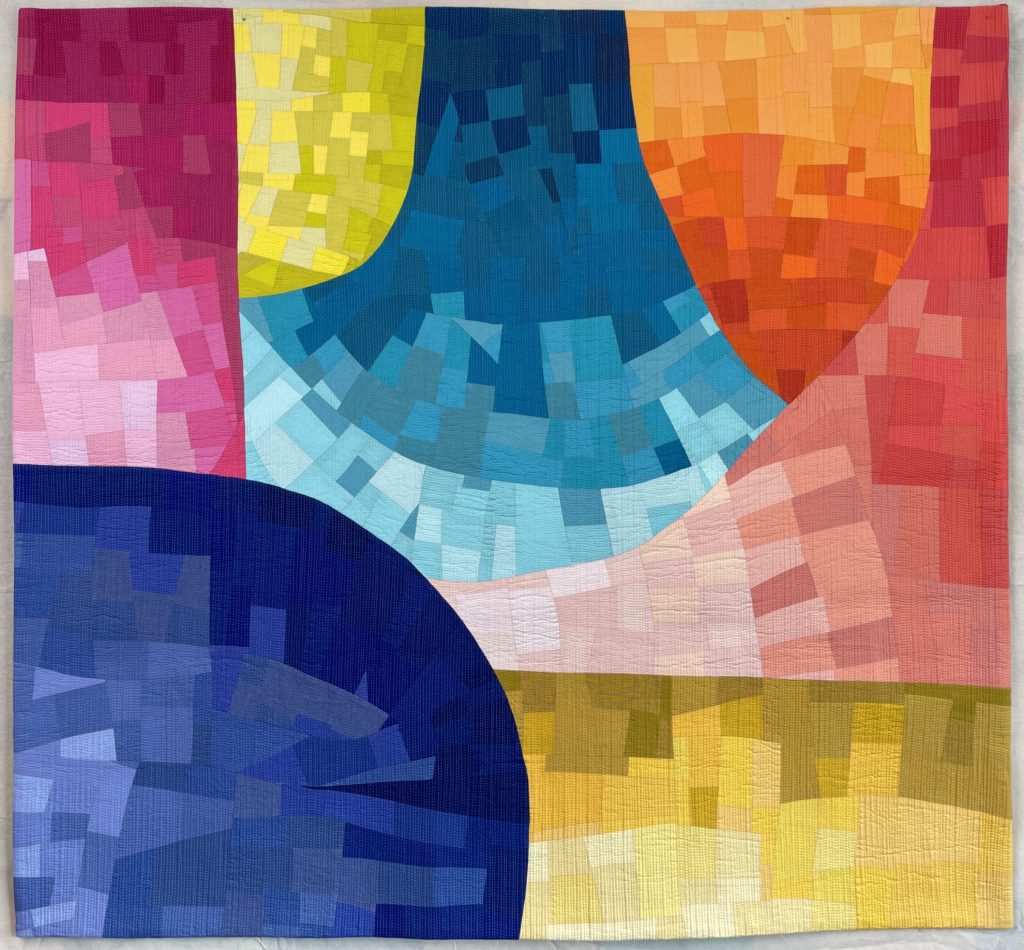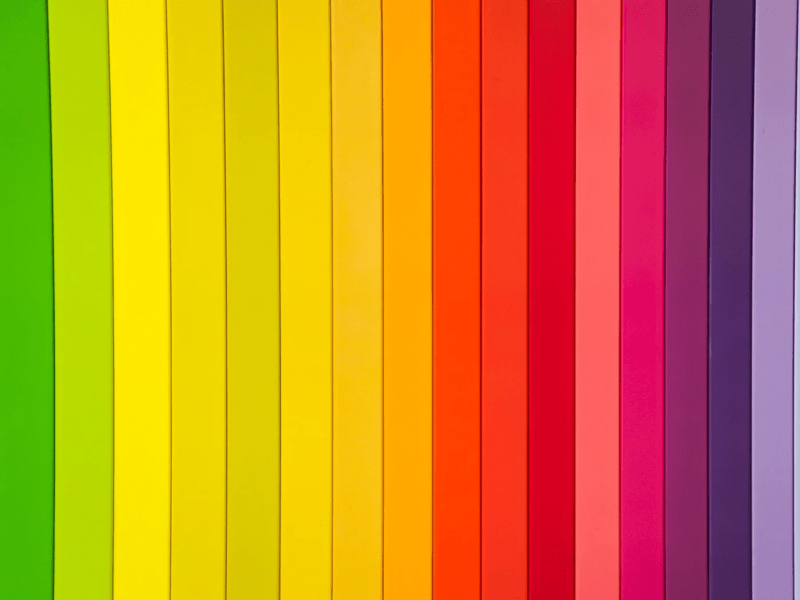“Color! What a deep and mysterious language, the language of dreams.”
Paul Gauguin
Have you ever wanted to learn how quilters add color to their designs to get something truly unique? A concept called color theory is an important principle that can help quilters achieve unique designs. Two courses that you can take, Playing With Color Value and Befriending Colors, can help you unlock the mystery of color theory and create unique improvisational quilts.

What You’ll Learn In Two Amazing Color Theory Courses
In these courses, the quilter learns several different concepts, like primary, secondary, and tertiary colors, as well as color values.
The Different Recipes For Color
Each secondary and tertiary color has a different recipe. If you are thinking about the different varieties of orange, such as red-orange, pure orange, and yellow-orange, you would need to mix your colors as follows:
- Red-Orange (three parts red, one part yellow)
- Pure Orange (two parts red, two parts yellow)
- Yellow Orange (one part red, two parts yellow).

Working With Color Value
The core primary, secondary, and tertiary colors can be modified even further by playing with color value. Color values are how much white and how much black are used in one of the core colors. When you start learning about how to work with color value, you will learn about how to smooth the color wheel between adjacent colors. This can entail adding different hues to three closely related colors on the color wheel. Once you learn how to create these hues, you will be able to employ an analogous scheme in your quilts, arriving at the different colors that you like.

Working With Iterative Processes Until You Are Happy
One of the things that you will learn in these courses is how to work through the different colors and their values until you are happy with what you have. The first step of the process is choosing a core color, your hue. You can then choose your color scheme by finding the complementary colors (the color schemes) that will look great on your quilt. You then assign which proportions you want to use them in (such as a 70% to 30% mix if you are working with two colors). Lastly, you can then start changing the variables in your color to include different shades and tints.
The Color Of Your Quilts Is Ultimately Up To You
Why take any courses on color theory? These classes will unhelp you uncover your own inner language. The colors that exist in your imagination, you will be able to create these more easily by understanding how colors are put together. Once you know this, you will enjoy the new and elaborate color schemes that you can use in your quilts.


